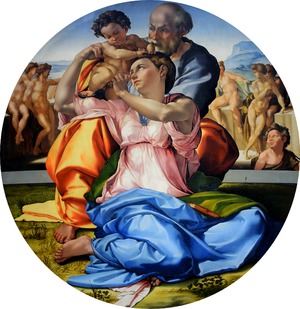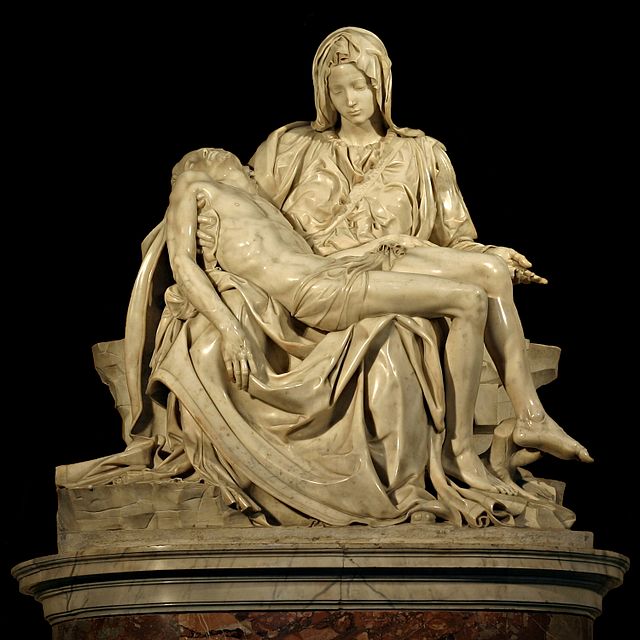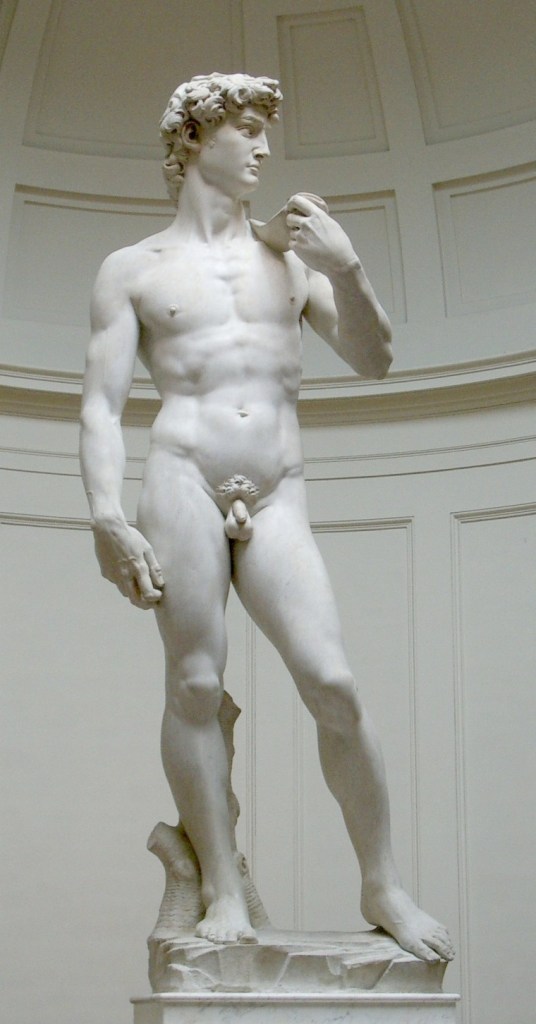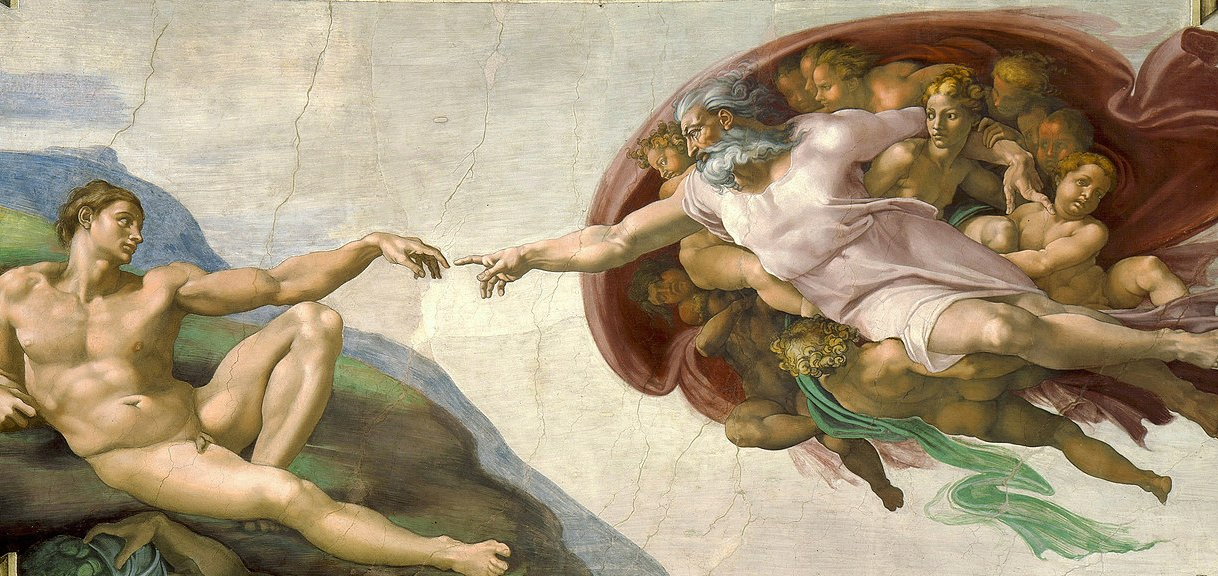In two minutes, I will tell you the story of one of the greatest artists of the Renaissance, creator of masterpieces such as the sculpture of David and the painting on the ceiling of the Sistine Chapel.
He was one of the greatest artists of the Italian Renaissance, capable of creating wonderful marble sculptures such as the very famous David that you can see in Florence and the Pietà, exhibited in the Basilica of San Pietro in Vatican City. There, you can also admire the wonderful painting on the ceiling of the Sistine Chapel, an immortal masterpiece that should be seen at least once before you die.
For all these reasons, I will tell you the story of Michelangelo Buonarroti. I’ll do so in two minutes, listing the main points of his life and of his career as an artist.
BIOGRAPHY AND WORKS OF MICHELANGELO:
SUMMARY IN TWO MINUTES (OF ART)
Who is Michelangelo?
1. Painter and sculptor, Michelangelo Buonarroti (born in Caprese, 1475 – died in Rome, 1564) is considered one of the greatest artists ever. His works greatly influenced Italian art and inspired many 16th century artists.
2. Michelangelo was born in Caprese (a town in the province of Arezzo, in Tuscany) to a family of Florentine nobles that was then in decline. At the age of only twelve, he started working at the studio of Domenico Ghirlandaio, one of the most important Florentine artists of the time.

At the court of Lorenzo the Magnificent
3. As a teenager, Michelangelo attended the academy of young artists in Florence, located at the “San Marco Garden”, in the heart of the city. The academy was financed by Lorenzo the Magnificent, lord of the city and an art lover. Michelangelo’s sculptures deeply impressed Lorenzo, who decided to host Michelangelo in one of his residences, located on Via Larga in Florence.
4. Michelangelo enjoyed the support of many influential patrons such as Lorenzo the Magnificent, Cardinal Jacopo Galli, Pope Alexander VI and Pope Julius II.
Despite the numerous clients, Michelangelo always showed great creative independence. In an era when artists created works only at the request of clients, Michelangelo was among the first to create works for the sole pleasure of creating them, later selling them to the highest bidder.

An artist not easy to get along with: the Tondo Doni
5. Michelangelo was not easy to get along with. One day, he so infuriated the sculptor Pietro Torrigiano that Torrigiano punched Michelangelo in the nose so hard that Michelangelo’s nose was disfigured for the rest of his life.
Another example is the case of the Tondo Doni. The artist created the painting for a wealthy client (Agnolo Doni) who, however, wanted to pay less than they had agreed upon for this work. Michelangelo, offended, decided that if Doni wanted this work, he would now have had to pay double what was originally agreed upon. If Doni didn’t agree to this demand, Michelangelo said he would keep it for himself. Doni eventually decided to pay double in order to have the Tondo Doni at his home. Now you can admire this work at the Uffizi Gallery in Florence.

Michelangelo’s sculptures
6. Michelangelo’s sculptures are inextricably linked to the white marble of Carrara, a town in Tuscany, famous for its marble quarries. Observing the marble block, Michelangelo saw an imprisoned figure inside, that only he was able to free and make visible to the world by removing excess marble with his chisel.
Thus, masterpieces were born such as the splendid Pietà (1497-1499), his first work in marble, created when the artist was only 23 years old, and the Schiavi, a series of sculptures that you can admire at the Gallerie dell’Accademia in Florence.

David by Michelangelo
7. Staying on this topic, we must not forget that Michelangelo is the creator of what is considered the most famous sculpture in the world: we are talking about David (made between 1501 and 1504).
At the time there was an argument about where to place this work. The argument involved Leonardo da Vinci, who at the time was one of the most famous artists in Florence. Leonardo wanted to place the statue under the balcony, in front of the Palazzo Vecchio in Florence, because it would have been more protected there. Michelangelo wanted to place it at the entrance of Palazzo Vecchio, because it would have been more visible there. Michelangelo’s proposal was finally approved.
Today the work is located in the Gallerie dell’Accademia in Florence, while at the Palazzo Vecchio (also known as “Palazzo della Signoria”) it is possible to admire a copy of the work.

Michelangelo and Leonardo da Vinci
8. There was clearly a rivalry between Leonardo da Vinci and Michelangelo but they also respected each other. In 1504, there was a real contest between the two.
Michelangelo was commissioned to create a fresco on a wall in the Great Hall of the Council of Palazzo Vecchio, to celebrate the victory of the Florentine warriors in the battle of Cascina. In the same room, the other wall was assigned to Leonardo da Vinci to paint another part of that war: The Battle of Anghiari.
The Sistine Chapel
9. Michelangelo created important paintings, such as the frescoes on the ceiling of the Sistine Chapel in Vatican City, a masterpiece of colossal proportions in which the famous painting The Creation of Adam stands out.
It is a monumental work that takes your breath away. Michelangelo created this series of frescoes from 1508 to 1512 on behalf of Pope Julius II. The artist created the work in amazingly fast time, if we consider that the paintings cover an area of 500 square meters!

10. In addition to being a great sculptor and painter, Michelangelo was also an important architect. When he was over seventy years old (in 1546) he was entrusted with the direction of the work on the monumental Basilica of San Pietro in the Vatican.

5 thoughts on “Michelangelo: life and paintings | summary in 10 points”